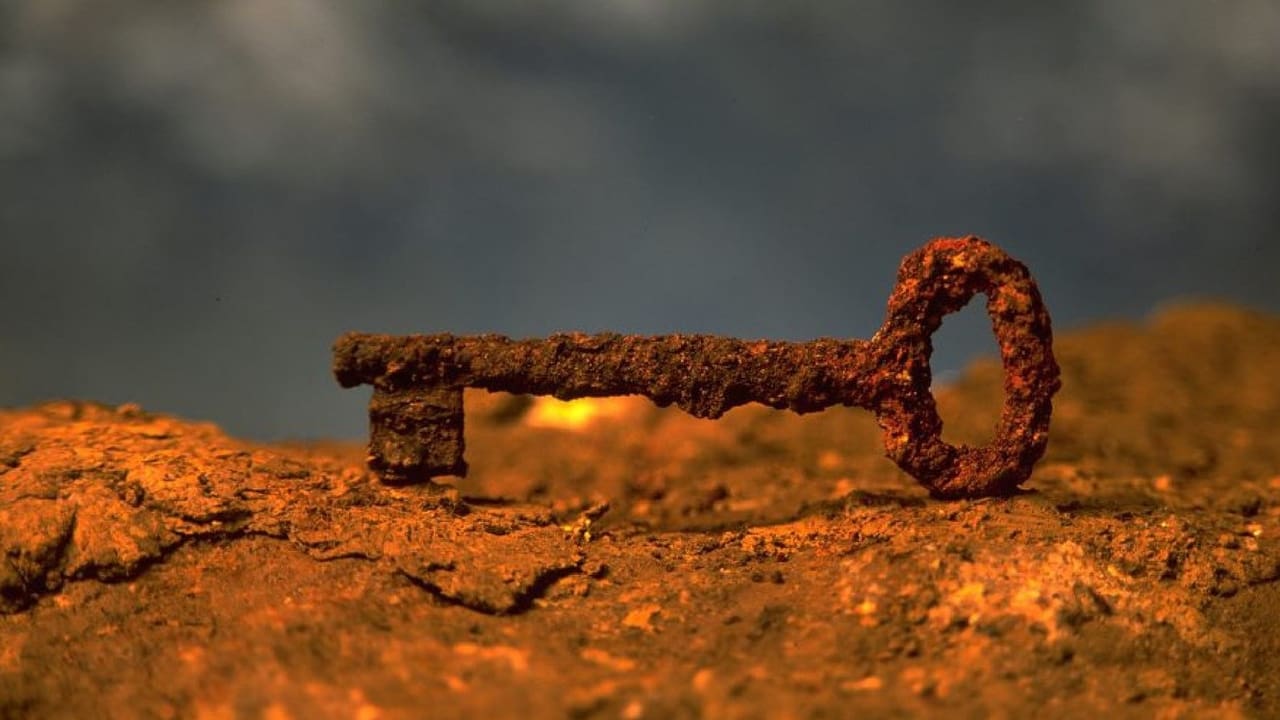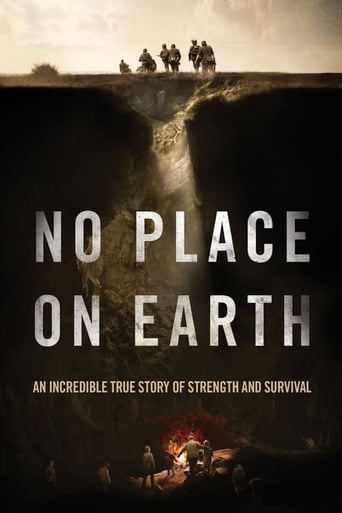

My main objection to this otherwise interesting film is that it lacks legal and political context, as mentioned above by another reviewer, and that it also lacks answers to some simple and predictable questions. We as viewers need to be informed about things that the protagonists knew already.Especially, I don't understand how it is possible that the two male family members who were living outside the cave and were the families' contact with food resources etc. were never discovered and arrested, even though the existence of the cave became known to the police. Were the police so obtuse? This question should haven been addressed and explained.We are also not told why it was so difficult for the present-day caver to spot these survivors, since one of them had already published a memoir about their adventure in Canada.
... View MoreNo Place on Earth (2012) is a documentary co-written and directed by Janet Tobias. This film is really three films in one. The first film is the story of an experienced U.S. caver (spelunker), Chris Nicola, who traveled to Ukraine to explore huge caves that he thought had never been visited. While underground, he came upon some fascinating items--buttons, shoes, combs. Nicola happens to be a professional investigator. He set about trying to solve the mystery of who had left these items behind. When he asked people in the vicinity, he came up against a stone wall of indifference or opposition. He received a few hints that maybe some Jews had (literally) gone underground. However, he couldn't get any hard data. Finally, when he had almost given up, he made connection with one of the survivors of this amazing story.Nicola learned that 38 Jewish men, women, and children had entered one cave, and then another, and had survived the brutal Nazi determination to kill them all. The men went out at night to obtain supplies, but the women and children stayed underground for 511 days! Many of the then-young people are still alive. All of them retain an almost photographic memory for what happened during the period. The second movie-within-a-movie is skillfully produced by director Tobias. She has recreated scenes from the period. (After all, no one was taking photographs, let alone film footage, in the caves.) The recreated scenes struck me as very realistic. Also, of course, before the filming began, the survivors provided the director with the factual information that she needed. In any event, the images were so realistic that it was sometimes hard to remember that this part of the movie was docudrama, and not documentary.Finally, the third film-within-a film follows four of the survivors as they return to Ukraine, with Nicola, and descend again, 70 years after they entered the cave for the first time. As would be expected, this part of the film is very moving and powerful. These people survived the war, they left Ukraine, and they came back to savor their victory over the oppressors.We saw this movie at the Rochester Jewish Community Center as part of the splendid Rochester Jewish Film Festival. It will work well on DVD. As I write this review, the film has an anemic 6.4 IMDb rating. Don't be mislead by that rating. It's a wonderful movie, worth finding and seeing.
... View MoreI would like to draw viewer's attention to a number of issues that are of great importance due to the delicate nature of this area, its complicated history and the need to respect all those who lived or indeed died in and around Bilche Zolote/Bilcze Zlote. This is also necessary thanks to the sudden spotlight throw onto the area by this much welcome film.Legal context. It is important to report facts correctly, in line with international law. This area, at this time was part of Poland. It is a fact that it was occupied illegally by the Soviet Union from September 1939 on the basis of an agreement made between Hitler's Germany and Stalin's Soviet Union. Further to this internationally unrecognised agreement, the whole of eastern Poland was incorporated into the Soviet Union, including Bilcze Zlote as it was then known. The German occupation from 1942 only added a further layer of illegality. When the area was retaken by the Soviets in 1944, they forced the puppet regime in Poland, (set up by Stalin) to recognise the annexations which occurred in 1945. Lex retro non agit, therefore the area up to 1945 is legally known as Wolyn (Volhyn) and the town as Bilcze Zlote and was in (occupied) Poland. Not the Uraine. Ethnic and political context. Upon occupying eastern Poland in 1939, the Soviet authorities commenced a programme of ethnic cleansing, in fact one of the biggest in history where over 2 million Poles were deported in cattle trucks to Siberia. Only half of them survived the war. When Germany attacked Russia, its former ally in 1942, they conducted genocide primarily against the Jewish population that had been living there since their invitation to come to Poland by the king of Poland, Casimir in 15th century.It should however also be noted that the Germans were able to mobilise nationalist factions within the Ukrainian population- The Ukrainian pro-Nazi militia staged pogroms and assisted the Nazis in executions of Poles and Jews. Ukrainian brigades were formed within the German army and the SS which later went on to actively participate in the liquidation of civilians in the Warsaw Ghetto Uprising in 1943 and the Warsaw Uprising in 1944. The Volhyn Genocide, conducted by nationalist Ukrainian forces, with the quiet acceptance of the German occupiers resulted in the massacre of 50,000 civilians, predominantly women and children.
... View MoreAs John Anderson of "Variety" rightly notes, "this film defies the notion that the era has been exhausted of its stories, or the ways they can be told..." (http://www.variety.com/review/VE1117948276/). The interchange between graphic re-enactment, interviews of the survivors still with us today, and narrative of caver Chris Nicola, elevate this story from one about mere survival to one about the strength of the human spirit and the value of life. Producers Janet Tobias, Rafael Marmor, Paul Laikin, Nadav Schirman, Susan Barnett, and Zita Kisgergely do more than depict a story. Like the family of 38 Jews escaping Nazi death camps and ghettos, we are led by the courageous matriarch of the family, Esther Stermer, into the deep underground of Ukraine. In defiance of the myths of science-fiction/horrors about the underworld, the matriarch teaches us the truth about the worlds above and below ground in 1940s Europe; the real daemons are to be found up there, while the crutch of life and human spirit is found down below. And when the horror from above tries to come down below, it is confronted with the most powerful living spirit of them all - the spirit of a mother determined to protect her family.The cinematography complements the telling of this story wonderfully. In the darkness of the caves, dimly lit candles bring hope; black-and-white historical videos and the grey tones from a clouded over sky infuse reality into the setting of the horror-world of the above; and the brightness and beauty of the spring blossom in the heart of the war provide a poetic irony that foretells of a coming heartbreak. The detail of the costume design – from broken buttons and worn shoe-laces to the mud and dirt covered white shirts of the eldest Stermer sons to the impenetrable headscarf of the matriarch – add more than mere richness, but a believability that matches the real-life outfits worn by the cavers. Finally, the devil is truly in the detail of the hair and head-to-toe make-up, which give off the festering scent of rot, mud and soak, and serve as a constant reminder that this is a story of real people trying to survive a world in which hell had no barriers, and deserved no place on earth.
... View More